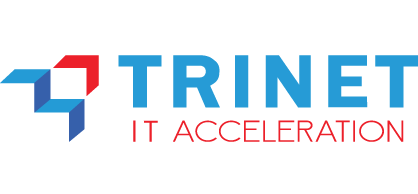Tech Innovation > Digital & IoT > Push-to-Talk over Cellular (PTToC)

Push-to-Talk over Cellular (PTToC)
Without this solution, organizations face the following challenges:
Limited Communication Range
Without PoC solutions, traditional two-way radios have limited communication range, especially in remote locations or areas with poor signal coverage, hindering effective communication across large or dispersed teams.
High Operational Costs
Without the use of PoC, organizations often rely on multiple communication devices and systems, increasing the costs for hardware, maintenance, and network infrastructure, while PoC consolidates these into a single, cost-effective solution.
Lack of Real-Time Communication
Traditional communication methods without PoC lack the ability for instant, real-time voice communication over cellular networks, leading to delays in critical decision-making and reduced team coordination during emergencies.

Key Features & Capabilities
Push-to-Talk over Cellular enables instant, reliable communication across vast distances, enhancing coordination.
Show Details
a. Instant Communication
Users can initiate voice conversations instantly by pressing a button, making it ideal for quick, real-time communication.
b. Wide Coverage
Since it utilizes cellular networks (such as 4G, LTE, or 5G), PTT over cellular can work in areas with mobile network coverage, offering a broader range than traditional walkie-talkies.
c. Group Communication
Multiple users can communicate simultaneously in a group chat, which is useful for teams working in the field or in large organizations.
d. Cost-Effective
PTT over Cellular can often be more affordable than traditional radio systems, especially for large-scale communication.
e. Versatility
In addition to voice communication, some PTT services also support features like text messaging, multimedia sharing, and location tracking.

Business Benefits
Push-to-Talk over Cellular enables seamless, real-time communication, improving team coordination and response.
Show Details
a. Instant Communication
- Real-time interaction: Just like a traditional walkie-talkie, PTT allows you to start speaking as soon as you push the button. This reduces the delay typically experienced with phone calls, emails, or even texting.
b. Wide Coverage
- Utilizes cellular networks: PTT over cellular operates on mobile networks like 4G, LTE, and 5G, so it works in most areas where there’s cellular signal coverage—much larger range than traditional radio-based walkie-talkies.
- Works globally: Unlike traditional radio, which has limited range (usually confined to a specific area), PTT over cellular can offer nationwide or even global communication, depending on the network used.
c. Group Communication
- Easy to coordinate teams: PTT over cellular can support group chats, allowing multiple people to communicate at once. This is particularly useful for businesses with large teams or field workers needing constant updates.
- No need for multiple calls: Instead of calling individuals one by one, you can broadcast a message to a group instantly.
d. Cost-Effective
- No need for expensive infrastructure: Traditional walkie-talkies or radio systems require dedicated hardware and infrastructure, but PTT over cellular uses existing cellular networks and mobile phones, reducing costs.
- Lower operational costs: Using a PTT service is often cheaper than setting up and maintaining a private radio system, especially for businesses that already have mobile phones for employees.
e. Reliable and Scalable
- Wide device compatibility: Since PTT services can run on smartphones or specialized PTT-enabled devices, there’s no need to invest in separate, dedicated communication devices for each employee.
- Scalable for any size organization: Whether you’re a small team or a large enterprise, PTT services can scale to your needs, easily accommodating additional users.
f. Enhanced Features
- Multimedia Sharing: Many PTT apps support more than just voice messages; they also allow sharing of photos, videos, and text messages. Some even offer GPS location tracking and real-time mapping, which is valuable for teams in the field.
- Data Insights: Some PTT solutions come with features like call logs, analytics, and reporting, helping businesses monitor communication patterns and ensure operational efficiency.
g. Durability and Security
- Durable devices: Some PTT-enabled devices are built for tough conditions, making them suitable for industries like construction, manufacturing, or emergency services.
- Security: PTT services over cellular networks often come with built-in encryption and security features to ensure the privacy and protection of communications.
h. Ease of Use
- No training needed: PTT technology is simple to use, making it easy for people to start communicating right away without extensive training or technical expertise.
- User-friendly interface: Most PTT apps are designed to be intuitive, and many work just like a traditional walkie-talkie, so users can get started with minimal setup.
i. Flexibility
- Works across multiple devices: Users can communicate using various devices, such as smartphones, tablets, or rugged PTT radios, offering more flexibility in how communication happens.
- Customizable settings: Depending on the platform, you may have the ability to configure PTT features to fit your specific business or personal needs, from prioritizing certain users to customizing message alerts.

Use Cases
Push-to-Talk over Cellular ensures instant, clear communication, boosting team efficiency and response time across industries.
Show Details
a. IT
BFSI (Banking, Financial Services, Insurance): High demand for low-latency trading and compliance.
b. Government & Defense
Focus on security and sovereign data storage.
c. Oil & Gas
Focus on operational efficiency and real-time monitoring.
d. Manufacturing
Optimizing production lines and predictive maintenance.

How It Works
Push-to-Talk over Cellular ensures instant communication, enhancing coordination and streamlining workflows.
Show Details
a. Overview of Push-to-Talk over Cellular (PTToC)
-
Push-to-Talk over Cellular (PTToC) allows users to instantly communicate by pressing a button on their cellular device. It uses cellular networks like 4G, LTE, or 5G to provide immediate, real-time communication, ideal for businesses that require efficient, group-based communication.
b. Instant Communication
-
PTToC enables users to initiate voice conversations instantly with a simple push of a button. This reduces delays compared to phone calls or emails, offering faster communication, particularly in time-sensitive situations.
c. Wide Coverage
-
Since PTToC operates on cellular networks (such as 4G, LTE, or 5G), it offers a broader range compared to traditional walkie-talkies. It provides coverage in most areas where there is mobile network availability, including nationwide or global communication capabilities.
d. Group Communication
-
PTToC supports group communication, allowing multiple users to interact simultaneously. This feature is particularly useful for teams working in the field, offering real-time updates and coordination without the need for individual calls.
e. Cost-Effectiveness
-
PTToC often reduces communication costs by using existing cellular networks instead of investing in specialized radio infrastructure. It offers an affordable solution for businesses, especially those already using mobile phones for communication.
f. Enhanced Features
-
PTToC services may include additional features such as multimedia sharing, GPS location tracking, and real-time mapping. These capabilities improve communication and operational efficiency, especially for field teams.
g. Durability and Security
-
Many PTToC devices are designed for rugged environments, making them suitable for industries like construction and emergency services. PTToC services often include encryption and security features, ensuring the confidentiality and integrity of communications.
h. Ease of Use
-
PTToC is simple to use, with intuitive interfaces that allow users to start communicating immediately. No extensive training is needed, making it easy for teams to adopt and integrate into their daily operations.
i. Scalability and Flexibility
-
PTToC solutions are highly scalable, allowing businesses to expand their communication network as needed. It can accommodate any size team, whether small or large, with flexible features that can be tailored to business requirements.
j. Reliability
-
PTToC offers reliable communication with consistent signal strength due to the widespread cellular network coverage. This ensures that teams can stay connected even in remote or challenging locations, minimizing downtime and communication disruptions.
Contact our experts for further information












